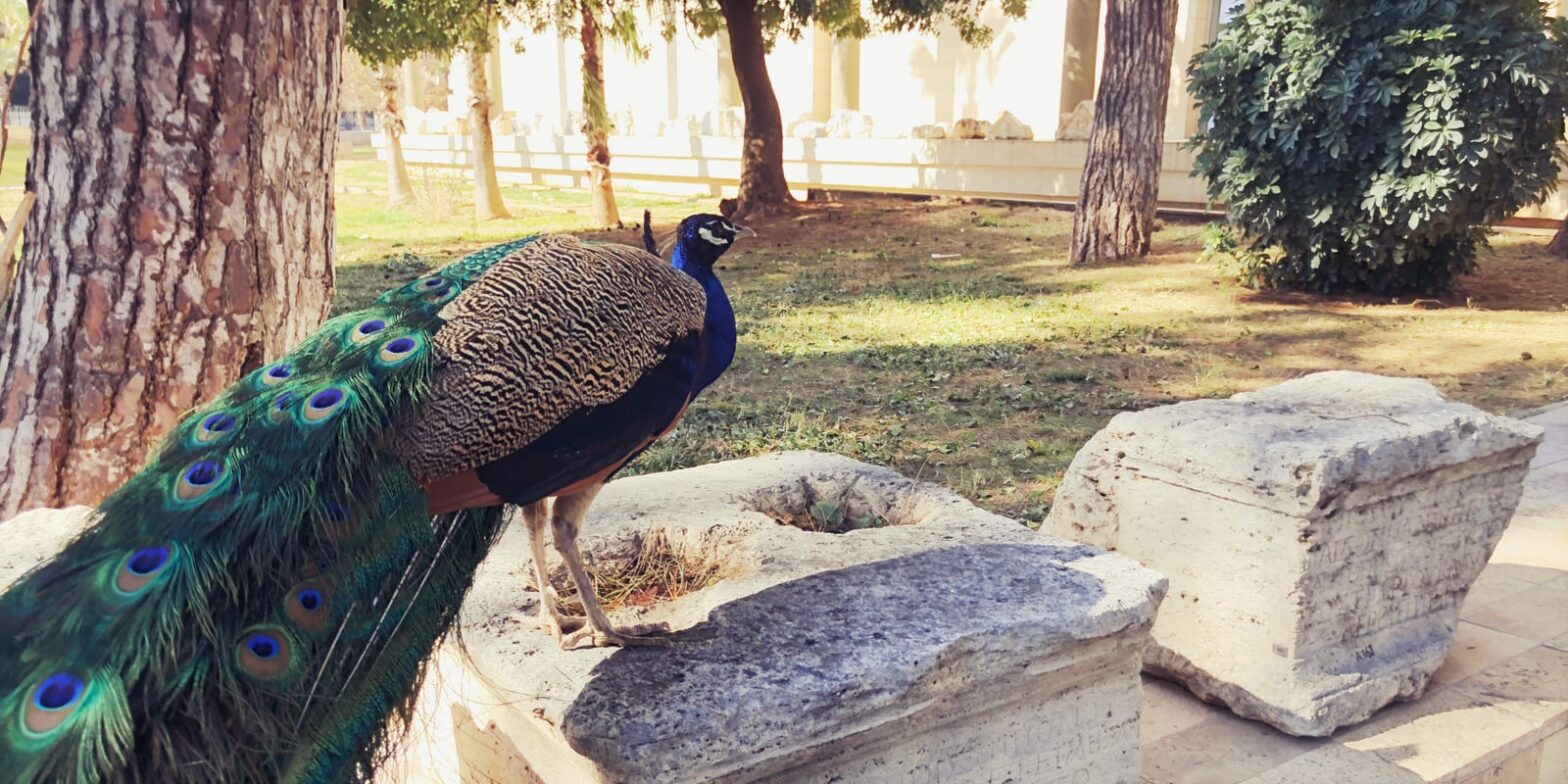A peacock drinking water from the foot holes of a statue base.
This is the dialectic of life, I guess. A peacock drinking water from the empty foot holes of the upper part of an inscribed statue base — without a statue.




As we learn from epigraphic sources,1 it was a statue of someone named Sextus Paccius Valerianus Flaccus. 2nd century AD.
A repurposed inscription, at least twice. Looks weary, but still alive.

Transcription
Ὁ δῆμος καὶ οἱ συνπολιτευ‐
όμενοι Ῥωμαῖοι ἐτείμησαν
Σέξτον Πάκκιον Σέξτου
υἱὸν Οὐαλεριανὸν Φλάκκον,
ἱερατε[ύ]σαντα Ῥώ[μ]ης δὶς
—-
Translation
“The People and the Romans living in the city honored Sextus Paccius Valerianus Flaccus, son of Sextus, who was twice priest of the goddess Rome —-”
Footnotes
- Bean 20 (Belleten 1958, 22-85, pp.21–91); SEG 17, 578. ↩︎

